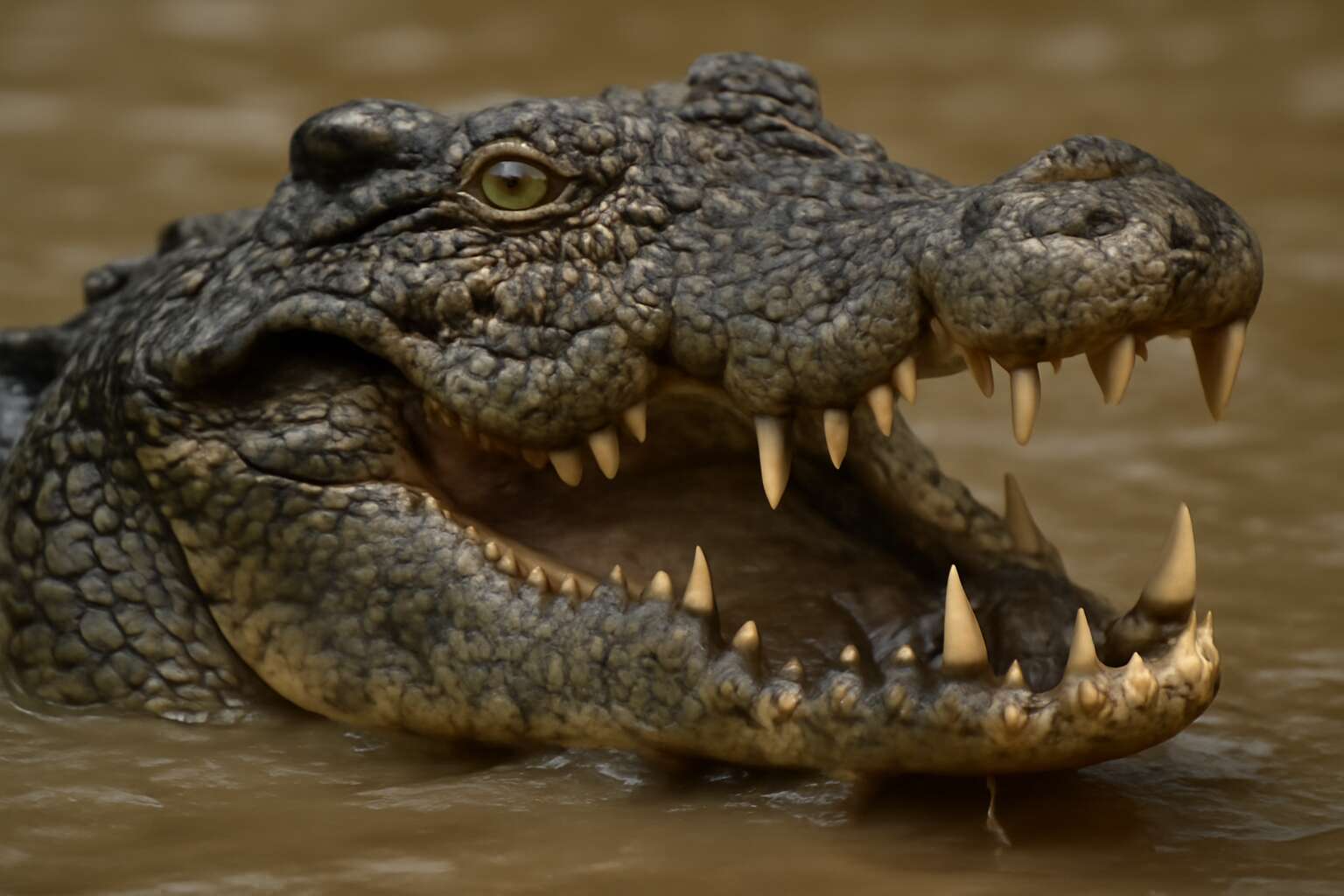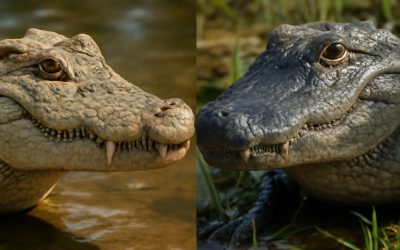Understanding Crocodile Diet and Feeding Habits
Overview of Crocodile Species – Different species and their dietary preferences
Understanding Crocodile Diet and Feeding Habits
Crocodiles are apex predators, renowned for their impressive hunting prowess and diverse diet. Their dietary preferences vary significantly across different crocodile species, reflecting adaptations to their habitat and available prey. For instance, the saltwater crocodile, the largest of all species, primarily preys on fish, birds, and even larger mammals such as wild boars and buffalos. Meanwhile, the Nile crocodile’s diet extends to a wide array of aquatic and terrestrial animals, making it a formidable hunter in African waterways.
The feeding habits of crocodiles are characterised by their ambush strategy—lying in wait beneath the water’s surface before striking with lightning-fast precision. Their powerful jaws are equipped to crush bones and shell, allowing them to consume prey whole or in large chunks. Interestingly, their diet can also include carrion, demonstrating their opportunistic nature.
When exploring what crocodile eat what, it’s essential to recognise the variations among species. Some crocodiles show a preference for fish, while others target larger terrestrial animals, showcasing their remarkable adaptability in the wild.
Natural Habitat and Food Sources – How environment influences diet
The environment in which a crocodile resides wields a profound influence on its dietary choices. These formidable predators have evolved to exploit the abundant resources within their natural habitat, whether freshwater rivers, lakes, or coastal estuaries. The availability of prey shapes their feeding habits, making their diet a fascinating reflection of ecological balance. For example, crocodiles in swampy wetlands may focus on fish and amphibians, while those in coastal regions might diversify their menu with seabirds, crabs, and even small sharks.
Understanding crocodile diet and feeding habits requires recognising the key food sources that sustain these apex predators. Their robust jaws and sharp teeth are perfectly adapted for capturing and crushing prey such as:
- Fish
- Birds
- Terrestrial mammals like wild boars and buffalos
- Crustaceans and molluscs
Their opportunistic nature means a crocodile will seize any available opportunity, often consuming carrion or scavenged prey, which further underscores their adaptability. The question of crocodile eat what extends beyond mere prey selection—it is a complex dance dictated by habitat, prey availability, and survival instincts. As the environment shifts, so too does their menu, showcasing an incredible capacity to adapt to their surroundings and prey preferences.
Crocodile Behavioral Traits Related to Hunting – Hunting techniques and feeding strategies
Within the shadowed depths of their aquatic domain, crocodiles exhibit a mesmerizing mastery of hunting techniques that reveal their status as apex predators. Their behavioural traits are a testament to evolutionary cunning, combining patience with explosive power. A crocodile’s approach to hunting is often a calculated ambush—lurking motionless beneath the water’s surface, eyes and nostrils just above the ripple, waiting for the perfect moment to strike. This strategy ensures minimal energy expenditure while maximising prey capture success.
When considering crocodile eat what, it becomes evident that their feeding strategies are as intricate as they are effective. These formidable creatures predominantly rely on their robust jaws and sharp teeth to seize and crush prey, often employing a combination of stealth and sudden acceleration. Their opportunistic feeding habits mean they are not solely dependent on live prey; scavenged carrion can also feature prominently in their diet, showcasing a remarkable adaptability to fluctuating prey availability.
Understanding crocodile dietary preferences requires recognising the variety in their prey selection. In their pursuit of sustenance, crocodiles might employ different tactics depending on their environment and prey type. For instance, crocodiles in riverine habitats often focus on fish and amphibians, while those in coastal regions might diversify their diet to include seabirds, crustaceans, and even small sharks. This dietary flexibility underscores their role as ecological opportunists and masterful hunters.
What Do Crocodiles Typically Eat in the Wild?
Prey Types for Crocodiles – Main categories of prey including fish, birds, and mammals
When it comes to the question of what crocodiles eat, the answer is as fascinating as their prehistoric appearance suggests. These ancient predators are not picky eaters; instead, they are opportunistic carnivores that seize whatever prey crosses their path in the wild. Crocodiles eat what is available in their natural habitat, ranging from tiny fish to hefty mammals, making them true masters of survival and adaptation.
Prey types for crocodiles include a diverse array of creatures, predominantly falling into three main categories: fish, birds, and mammals. Fish constitute a significant portion of their diet, especially for younger crocodiles, who find their slippery prey easier to handle. Larger crocodiles, on the other hand, often ambush birds perched nearby or swooping over the water, as well as mammals that venture too close to the water’s edge. Their hunting strategy is a fine-tuned blend of patience and sudden violence, thanks to their powerful jaws and stealthy approach.
Interestingly, the diet of crocodiles can vary based on their environment and size. Some species have adapted to feed on crustaceans or even specialise in certain prey, sharpening their skills in the art of predation. As a result, the question of what crocodile eat what is as complex as the ecosystems they inhabit, showcasing their role as apex predators in the wild.
Dietary Variations by Age and Size – Juvenile vs adult diets
Crocodiles are the ultimate survivors, and their diet reflects their adaptability and cunning. When considering what crocodiles eat in the wild, it’s fascinating to see how their nutritional choices shift with age and size. Juvenile crocodiles, for example, predominantly feast on small fish and invertebrates, which are easier to manage and less risky to hunt. Their diet is a delicate balance of necessity and opportunity, often involving quick bursts of speed to snag their slippery prey.
As crocodiles grow larger, their dietary preferences expand and diversify. Adult crocodiles become formidable apex predators, capable of tackling larger prey such as birds and mammals. Their hunting strategies evolve with their size—ambushing unsuspecting prey from below the water surface or lurking motionless along the bank. Interestingly, some species develop specific dietary adaptations, focusing on crustaceans or even carrion, showcasing their remarkable versatility.
- Juvenile crocodiles mainly eat fish, small invertebrates, and insects.
- Adult crocodiles shift focus to larger prey, including birds and mammals.
This dietary evolution underscores a simple yet profound truth: crocodiles eat what is available in their environment, showcasing their role as master predators in the ecosystem. Whether tiny or enormous, their appetite remains insatiable, adapting seamlessly as they grow and the landscape around them changes.
Seasonal and Regional Food Preferences – Changes in diet based on season and location
In the wild, the diet of a crocodile is a captivating reflection of its environment, season, and regional availability. Crocodile eat what is accessible and abundant, adjusting their prey choices with remarkable precision. During the wet season, for example, rivers swell with fish and aquatic creatures, making fish the primary target for many crocodile species. Conversely, in drier periods, their diet may shift towards terrestrial prey like birds or mammals that come closer to water sources.
Regional differences further influence what crocodiles eat. In freshwater habitats, they often hunt fish, crustaceans, and amphibians, while in coastal or brackish environments, their diet may include seabirds or marine mammals. Some species are known to scavenge carrion when live prey is scarce, showcasing their opportunistic feeding behaviour. Interestingly, their dietary preferences can also include reptiles or even young crocodiles, depending on the available prey and their size.
- Availability of prey
- Seasonal changes in prey populations
- Regional habitat characteristics
Overall, the insatiable appetite of crocodiles and their ability to adapt to changing circumstances highlight their role as apex predators—masters of survival who eat what their environment provides, no matter the season or location. This dynamic adaptability makes the question of what crocodile eat what truly fascinating to observe in the wild.
Common Food Items in Crocodile Diet
Fish and Aquatic Creatures – Primary diet component in aquatic environments
When it comes to understanding crocodile eat what, fish and other aquatic creatures top the list as their primary diet components. These formidable predators are perfectly adapted to hunt in their watery habitats, where fish represent a plentiful and accessible food source. Crocodiles rely on their stealth and powerful jaws to ambush their prey with remarkable efficiency, often surprising even the most cautious fish.
In addition to fish, crocodiles also consume a variety of aquatic creatures such as crustaceans, amphibians, and occasionally small reptiles. This diverse diet helps them thrive across different environments, from freshwater rivers to coastal lagoons. Their hunting strategies are highly specialised, allowing them to exploit the rich abundance of aquatic life available in their ecosystems.
- Fish
- Crustaceans
- Amphibians
- Small reptiles
Understanding what crocodiles eat reveals a lot about their role in maintaining ecological balance. Their preference for fish and aquatic creatures underscores their importance as apex predators, shaping the health and diversity of their aquatic environments. So, next time you wonder about crocodile eat what, remember that their diet is intricately linked to the vibrant, sometimes fragile, ecosystems they inhabit.
Birds and Small Mammals – How crocodiles hunt land and water-based animals
Crocodiles are not just water-dwelling giants; they are versatile predators that extend their hunting prowess onto land. When exploring crocodile eat what, it’s fascinating to note how their diet includes a variety of terrestrial prey, especially birds and small mammals. These creatures often venture close to water, making them easy targets for crocodiles patiently waiting beneath the surface.
Crocodiles employ a combination of stealth and explosive power to catch land-based animals. They lurk quietly, waiting for the perfect moment to strike with their formidable jaws. Sometimes, they utilise a surprise ambush from the water’s edge, especially when hunting birds nesting near the bank. The list of common food items in a crocodile’s diet on land includes:
- Birds such as herons, ducks, and wading species
- Small mammals like rodents and hares
- Reptiles that venture too close to the water
Whether hunting in water or on land, crocodiles adapt their tactics to maximise their prey capture success. Their ability to switch seamlessly between aquatic and terrestrial hunting makes them one of nature’s most formidable apex predators. So, when contemplating crocodile eat what, remember that their diet extends well beyond fish, embracing a range of birds and small mammals that cross their path.
Large Prey and Challenges – Hunting large animals like wildebeests or cattle
In the shadowy depths of their domain, crocodiles demonstrate an extraordinary appetite for large prey, transforming their formidable jaws into instruments of both patience and ferocity. When pondering crocodile eat what, it is essential to recognise their remarkable capacity to tackle animals vastly larger than themselves—wildebeests, cattle, and even ostriches, all fall prey to their relentless pursuit. These apex predators often employ ambush tactics, lurking beneath the surface or along riverbanks, awaiting the perfect moment to seize their quarry with explosive power.
Hunting large animals presents an array of challenges. Crocodiles must exert immense strength to overpower prey that fights back with desperation. Sometimes, they employ a technique called the “death roll,” spinning their massive bodies to disorient and tear apart their catch. The struggle is intense, but their adaptability allows them to exploit opportunities when prey ventures too close to the water’s edge. The list of common large prey items includes:
- Wildebeests crossing rivers during migration
- Cattle grazing near swampy banks
- Horses and other sizeable land mammals that stray too close to water
Despite the formidable challenges, crocodiles have evolved to become masters of both stealth and raw power. Their ability to hunt large prey, combined with their patience and strategic ambush techniques, cements their reputation as one of nature’s most cunning predators. When considering crocodile eat what, it becomes clear that their dietary pursuits stretch far beyond fish or small mammals—these giants are capable of bringing down some of the most imposing creatures of the savannah and floodplain.
Dietary Habits of Crocodiles in Captivity
Typical Food Rations – What crocodiles are fed in zoos and sanctuary environments
When considering the subtle yet predatory appetite of the crocodile, one might assume their diet is as straightforward as their jaw strength is formidable. However, in captivity, their dietary habits reveal a surprising diversity. While their natural instincts remain sharp, what crocodile eat what in controlled environments often exceeds expectations. These apex predators thrive on a carefully curated menu designed to mimic their natural prey, yet they are surprisingly adaptable.
Typical food rations for crocodiles in zoos and sanctuaries include a mix of fish, poultry, and even small mammals. To ensure optimal health and growth, caretakers often provide a balanced diet that reflects their natural predilections. For instance, the diet may feature items such as fish (like catfish or tilapia), chicken carcasses, and occasionally, small rodents. These dietary choices not only support their robust physical condition but also stimulate natural hunting behaviours, even in a captive setting.
- Fresh fish and aquatic creatures
- Meat-based offerings such as poultry and small mammals
- Occasional treats like eggs or specially prepared meats
Understanding what crocodile eat what in captivity provides insight into their ecological roles and dietary requirements. It’s a delicate balancing act—ensuring the crocodile remains healthy while honouring its instinctual predatory nature. Ultimately, their diet in zoos and sanctuaries is a testament to both scientific precision and a touch of culinary ingenuity, tailored to maintain these ancient predators’ formidable reputation.
Differences from Wild Diet – How captivity affects their eating habits
The dietary habits of crocodiles in captivity reveal a fascinating divergence from their wild counterparts, illustrating how environment shapes their eating patterns. While in the wild, crocodiles are opportunistic predators, their natural diet is rich and diverse, encompassing a wide array of prey. In contrast, captivity necessitates a carefully curated menu that balances nutritional needs with behavioural stimulation. Interestingly, despite these adjustments, crocodiles still maintain their predatory essence, demonstrating remarkable adaptability.
In a controlled setting, crocodile eat what is provided with precision and purpose. Their diet often includes fresh fish such as catfish or tilapia, which serve as primary aquatic sustenance. To mimic their natural hunting instincts, caretakers introduce poultry and small mammals, including rodents, into their meals. This varied diet not only supports their physical health but also encourages natural hunting behaviours, keeping their instincts sharp even behind the safety of enclosure walls.
Understanding what crocodile eat what in captivity offers invaluable insights into their ecological roles and dietary needs. It’s a delicate equilibrium—providing enough nourishment to sustain their formidable physique while honouring their predatory heritage. In essence, the captive diet is a blend of scientific precision and culinary ingenuity, crafted to uphold the legacy of these ancient predators while adapting to the confines of their environment.
Nutritional Requirements – Vitamins, minerals, and diet balance
Understanding what a crocodile eat what in captivity is essential for ensuring their health and well-being. Their dietary requirements are carefully tailored to meet their specific nutritional needs, reflecting their status as apex predators. A balanced diet provides vital vitamins and minerals, crucial for maintaining their formidable physique and supporting natural behaviours. Proper intake of nutrients such as calcium, phosphorus, and omega fatty acids keeps their bones strong and skin healthy.
In captivity, their diet often includes a variety of food sources, carefully curated to mirror their natural prey. To ensure dietary balance, caretakers typically incorporate fresh fish like tilapia or catfish, which serve as primary aquatic sustenance. Poultry and small mammals, including rodents, are introduced to stimulate their predatory instincts and diversify their intake. This approach not only promotes physical health but also encourages natural hunting behaviour, which is vital for their psychological well-being.
When considering crocodile eat what, it’s important to remember that their nutritional needs change with age and size. Juveniles may require more frequent, protein-rich meals, while adults need larger, less frequent portions. A typical diet for captive crocodiles might include:
- Fresh fish such as tilapia or catfish
- Poultry like chicken or quail
- Small mammals including rodents
This variety ensures they receive a rich mix of essential nutrients, supporting their health and longevity in controlled environments. Balancing their diet with the right vitamins and minerals, while keeping their predatory instincts sharp, exemplifies the delicate art of caring for these formidable creatures. Ultimately, understanding what crocodile eat what in captivity reveals much about their ecological needs and the efforts made to preserve their legacy behind secure enclosures.
Myths and Facts About Crocodile Diet
Myth: Crocodiles Only Eat Fish – Debunking common misconceptions
Crocodiles, often perceived as simple fish-eaters, are in fact far more eclectic in their diet. A common myth persists that crocodiles only eat fish, but this notion couldn’t be further from the truth. These formidable predators are opportunistic feeders, adapting their diet to the resources available in their natural habitat. In reality, their menu can include a diverse array of prey, from aquatic creatures to land-based animals.
While fish constitute a significant part of their diet, especially in aquatic environments, crocodiles also hunt birds, small mammals, and even larger prey such as wildebeests or cattle. Their hunting strategies are as varied as their prey, employing stealth, sudden ambushes, and powerful bites. This behavioural adaptability ensures they thrive across different regions and seasons, making their diet remarkably versatile. So, when pondering the question, crocodile eat what? The answer is a complex blend of aquatic and terrestrial fare, reflecting their role as apex predators in their ecosystems.
Fact: Crocodiles Are Opportunistic Feeders – Eating habits reflecting behavioral adaptability
In the shadowy depths of rivers and swamps, crocodiles reign as silent hunters, their reputation often shrouded in myth. A common misconception persists—crocodiles only eat fish. Yet, these formidable predators are far more versatile than their reputation suggests. The question, “crocodile eat what?” reveals a fascinating tapestry of dietary habits that defy simple categorisation.
Fact: crocodiles are opportunistic feeders, a trait that underscores their behavioural adaptability. Whether stalking prey along the riverbank or lurking beneath the water’s surface, they are masters of stealth and sudden ambush. Their diet varies with habitat, season, and size, showcasing an evolutionary prowess that allows them to thrive across diverse ecosystems. From fish darting through aquatic plants to land-based mammals wandering near the water’s edge, crocodiles are eager diners with an eclectic palate.
Indeed, their menu includes:
- Fish and other aquatic creatures
- Birds swooping above the water
- Small mammals like rodents and monkeys
- Large prey, such as wildebeests or cattle, especially when opportunity strikes
It’s this behavioural flexibility that makes crocodiles true apex predators—adaptable, cunning, and unrelenting in their pursuit of survival. So, next time you ponder “crocodile eat what,” remember that their dietary repertoire is a captivating blend of aquatic and terrestrial fare, perfectly tuned to the rhythms of their natural world. Truly, their eating habits are a testament to nature’s ingenuity in crafting predators that can adapt and flourish in a myriad of environments.
Myth: Crocodiles Target Humans Regularly – Clarifying the danger and frequency of attacks
Many imagine crocodiles as relentless fish eaters, but the truth is far more astonishing. A common myth persists—crocodiles only target aquatic life, especially fish. Yet, these apex predators are remarkably versatile, capable of taking on a diverse range of prey. When asking “crocodile eat what,” it’s essential to recognise their opportunistic nature and behavioural flexibility. They adapt their diet based on habitat, prey availability, and their own size and age, making them some of the most formidable hunters in the wild.
Contrary to popular belief, crocodiles frequently hunt land-based animals and even larger mammals when the opportunity presents itself. Their diet can include birds, small mammals, and occasionally larger prey such as cattle or wildebeests. This dietary diversity highlights their ability to survive in varied ecosystems and underscores their status as true apex predators. So, the next time you ponder “crocodile eat what,” remember that their menu is as eclectic as their hunting tactics—ranging from shimmering fish in the water to sprawling land animals.
Impact of Diet on Crocodile Conservation
Diet and Ecosystem Balance – Role of crocodile feeding habits in ecological health
The diet of a crocodile is a fascinating reflection of its role in the ecosystem, highlighting the delicate balance of nature’s food web. These apex predators are not merely opportunistic eaters but vital contributors to ecological health. Their feeding habits influence prey populations and help maintain a healthy aquatic environment, ensuring biodiversity thrives. Understanding what crocodiles eat—crocodile eat what—reveals their significance in controlling overpopulation of certain species and preventing habitat degradation.
In their natural habitat, crocodiles consume a variety of prey, from fish and birds to land mammals. Their dietary preferences shift with age and size, illustrating a dynamic adaptability that supports ecosystem stability. For example, juvenile crocodiles primarily target small fish and insects, while adults can take down much larger prey like wildebeests or cattle. This behavioural flexibility underscores their role as keystone species. Interestingly, seasonal variations influence their diet, with regional food availability shaping what crocodile eat what in different parts of the world.
Threats to Food Sources – Human activity and habitat loss affecting diet
The delicate dance between predator and prey defines the very essence of ecological equilibrium, and nowhere is this more vividly illustrated than in the diet of crocodiles. These formidable creatures, often misunderstood as mere fish eaters, possess a complex and adaptable feeding strategy that underscores their role as apex predators. The question, “crocodile eat what,” unlocks a deeper understanding of their significance in maintaining biodiversity and ecosystem stability.
In their natural environment, crocodiles are opportunistic feeders, selectively consuming prey based on availability and size. Their diet can include a diverse range of aquatic and terrestrial animals, from fish and amphibians to large mammals. Seasonal and regional variations further influence what crocodile eat what, as food sources fluctuate with climate and habitat changes. This behavioural flexibility not only ensures their survival but also helps regulate prey populations, preventing overgrazing and habitat degradation, thus supporting ecological health.
However, human activity increasingly threatens their food sources. Habitat destruction, pollution, and overfishing diminish the prey populations that sustain crocodiles. These pressures can lead to nutritional deficiencies and impact reproductive success, underscoring the importance of conserving their natural habitats. The balance of their diet is integral to their survival, and any disruption can ripple through the entire ecosystem, highlighting the vital role crocodiles play in ecological stability.
Conservation Efforts – Protecting prey populations to sustain crocodile species
Understanding what crocodiles eat is crucial for their conservation, yet it’s often overlooked in broader ecological discussions. An imbalance in prey populations can threaten their survival, making the protection of these prey species essential to maintaining healthy crocodile populations. When the natural diet of crocodiles is disrupted—whether by habitat destruction or overfishing—the repercussions ripple through entire ecosystems. This delicate balance highlights why knowing what crocodiles eat is more than just curiosity; it’s a key component of effective conservation efforts.
To sustain crocodile populations, conservation initiatives must prioritise protecting prey sources such as fish, amphibians, and small mammals. These prey items form the backbone of their diet, especially in aquatic environments. In fact, maintaining a diverse and abundant prey base ensures crocodiles receive the vital nutrients they need for growth and reproduction. When prey populations decline, crocodiles are forced to adapt, often leading to nutritional deficiencies that threaten their long-term viability.
Conservation programmes often focus on habitat preservation, but they also include measures to control overfishing and reduce habitat fragmentation. By safeguarding the prey species that crocodile eat what, conservationists help uphold the ecological role of crocodiles as apex predators. This balance is essential — not just for crocodile survival but for the health of entire ecosystems, which depend on these predators to keep prey populations in check and prevent overgrazing. Ultimately, the fate of crocodiles hinges on the preservation of what they eat, making prey conservation a cornerstone of their survival strategy.




0 Comments